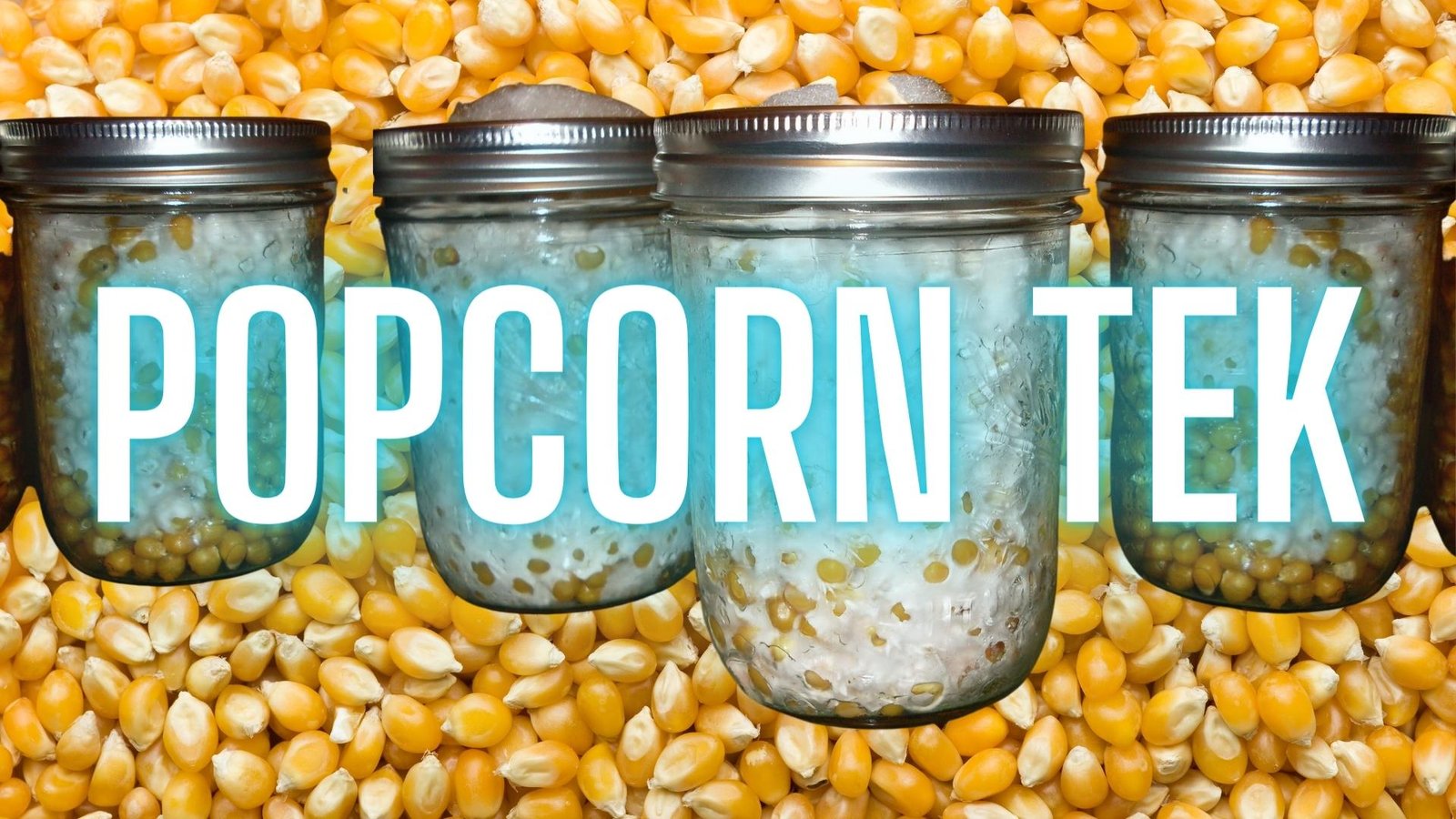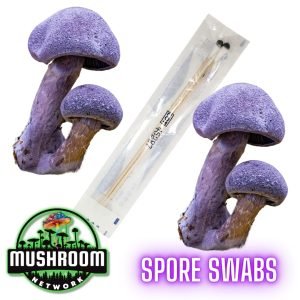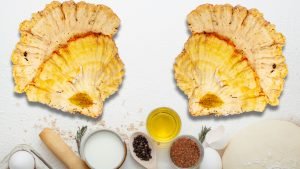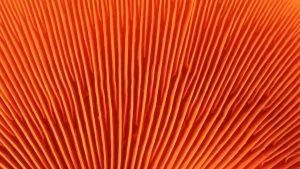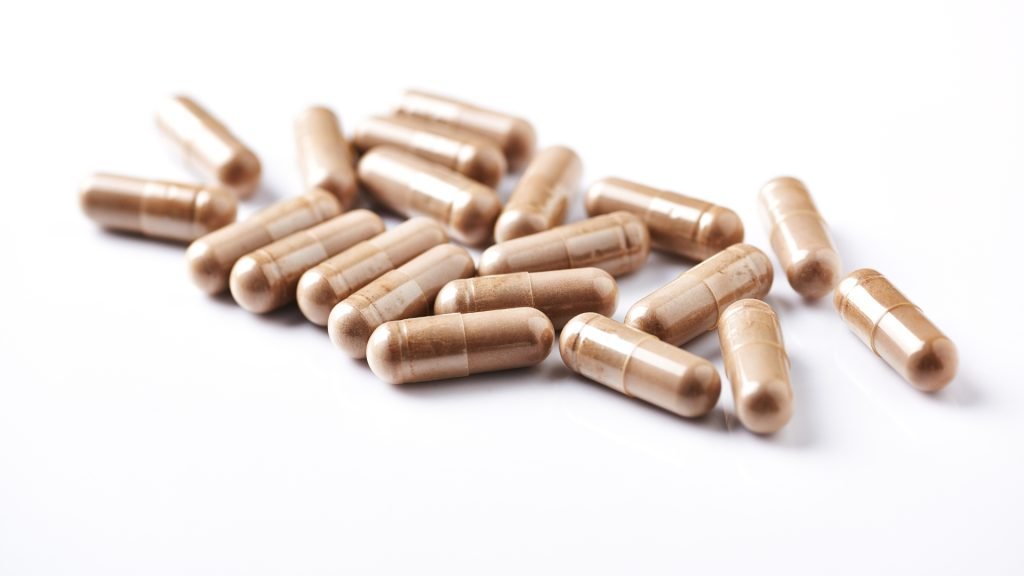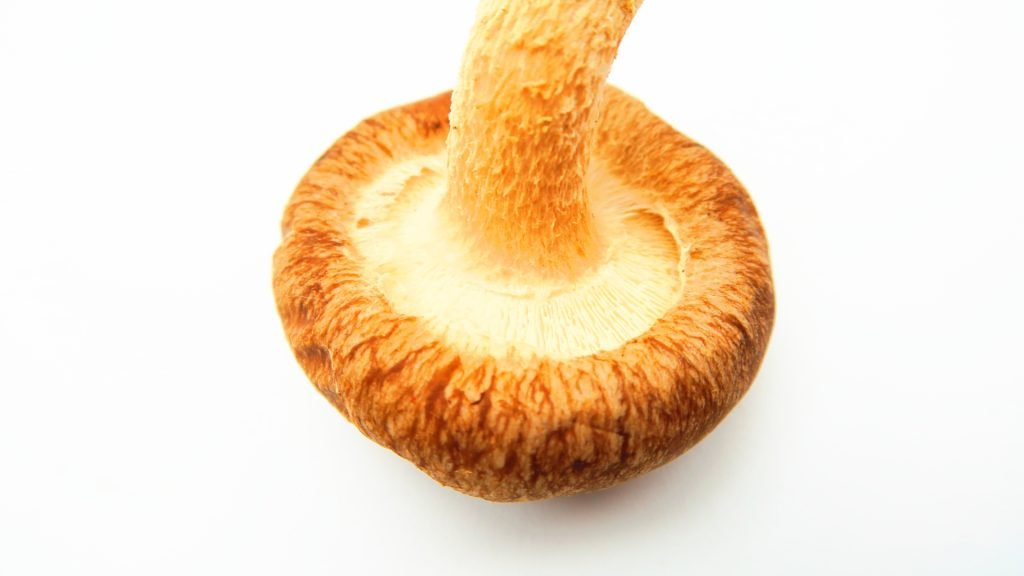The art of mycology is all about detail, precision, and understanding the nuanced needs of your fungal friends. Among the various methods, the Popcorn TEK has gained popularity for its simplicity, affordability, and efficiency. Let’s dive into the step-by-step guide of this method:
Popcorn TEK offers a novel approach in the mycology realm. Leveraging popcorn kernels as a substrate, it’s a boon for those venturing into grain-to-grain transfers and spawning bulk substrates.
Why Popcorn?
Popcorn is not only cost-effective and readily available but also possesses a natural barrier against many contaminants.
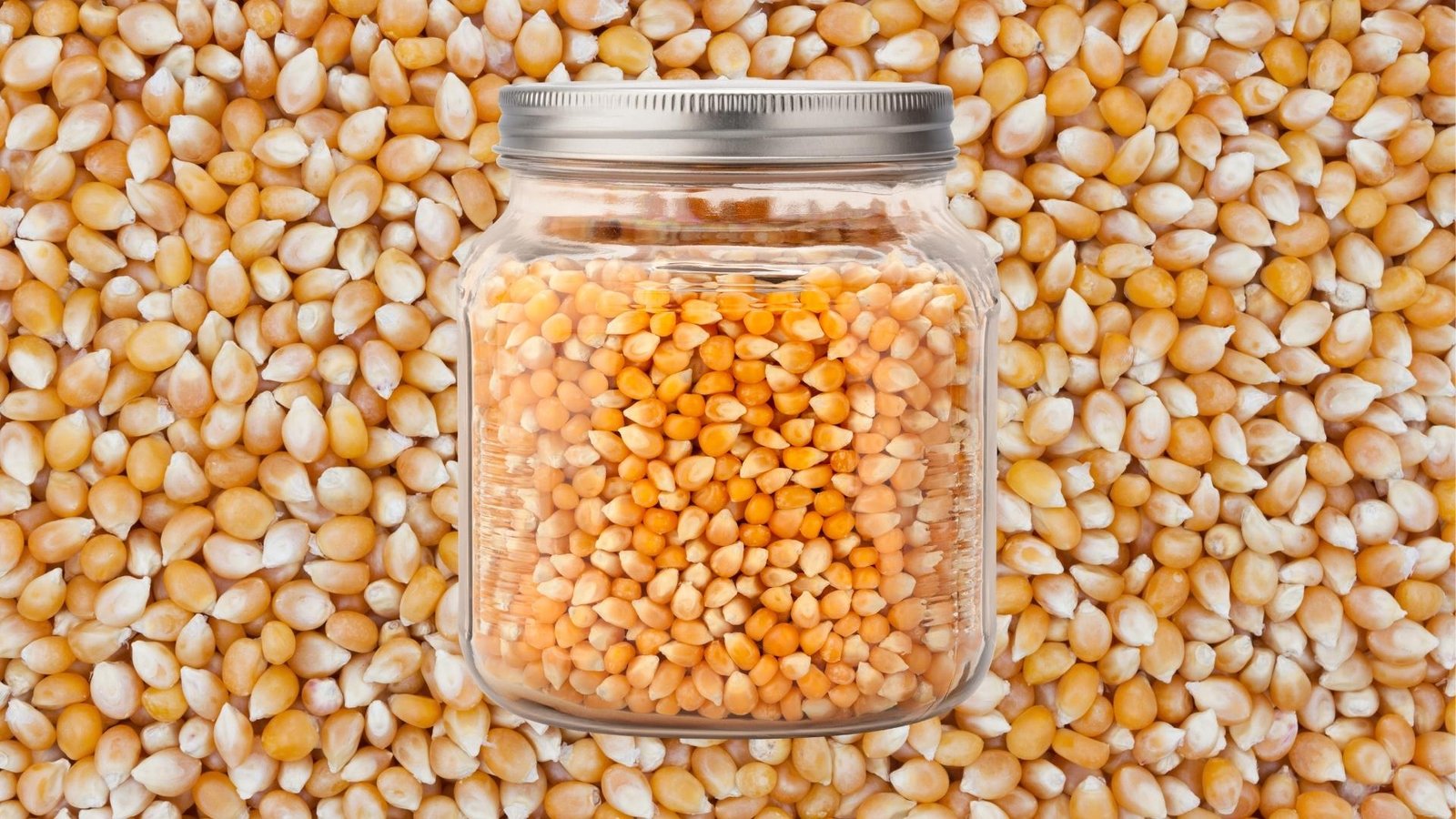
MATERIALS NEEDED:
- Popcorn kernels (ensure they’re additive-free)
- Gypsum
- Karo syrup
- Pressure cooker
- Mason jars (Pint or Quart-sized)
- Lids and bands for mason jars
- Aluminum foil
Popcorn TEK Quick Reference Chart:
INGREDIENTS: | PINT SIZE: | QUART SIZE: |
| Popcorn Kernels | 100-125g | 200-250g |
| Gypsum (optional but recommended for texture improvement) | 1/2 tsp | 1 tsp |
| Karo Syrup (optional, boosts nutritional value) | 1/2 tsp | 1 tsp |
| Water (for soaking) | Enough to Cover | Enough to Cover |
| Pressure Cooking Time | 90 Minutes | 90 Minutes |
| Pressure Cooking PSI | 15 PSI | 15 PSI |
Please Note: Gypsum and Karo syrup, though optional, can greatly amplify your substrate’s quality.
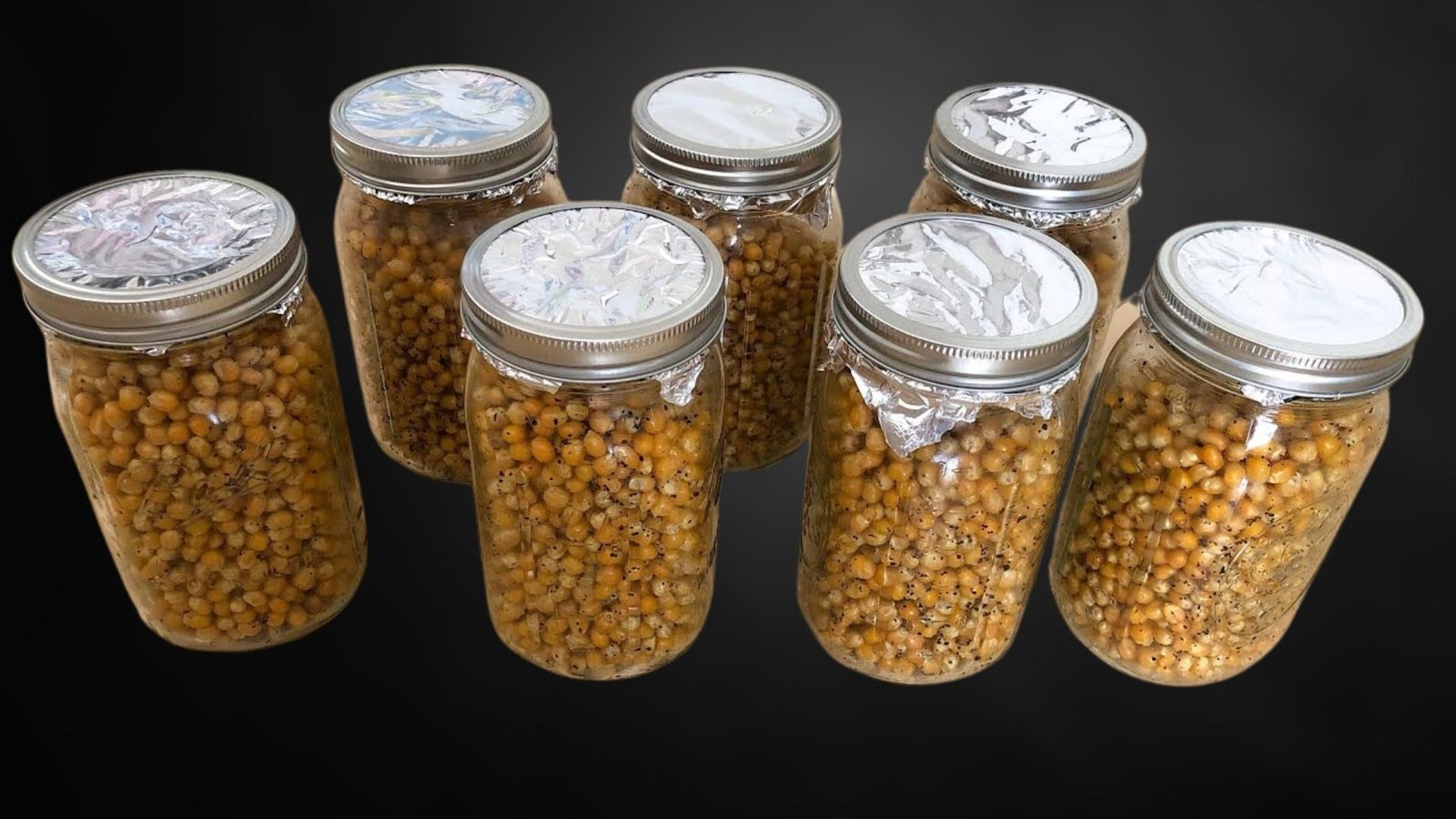
PROCEDURE:
Popcorn Preparation:
- Measurement: Depending on the size of your jar:
- For a quart jar, use between 200-250g of popcorn kernels.
- For a pint jar, use between 100-125g of popcorn kernels.
- Soaking: Immerse the popcorn kernels in water and let them soak for a full 24-hour period.
Rinsing & Draining:
- Rinsing: After the soaking period, wash the kernels meticulously using cold water to remove any excess starch and potential contaminants.
- Draining: Post-rinsing, place the kernels in a strainer, allowing them to drain for around 30 minutes, ensuring most of the excess water is gone.
Incorporation of Optional Additives – Gypsum and Karo Syrup:
- Gypsum Additive: Based on your jar size:
- Add 1 teaspoon of gypsum for a quart-sized jar.
- Use 1/2 teaspoon for a pint-sized jar.
- Karo Syrup Additive:
- For a quart jar, mix in 1 teaspoon of Karo syrup.
- For a pint jar, stir in 1/2 teaspoon.
Jar Filling & Sterilization:
- Filling: Load the jars with the Popcorn mixture with the correct amount of Popcorn.
- PLEASE NOTE: If you followed our recipe (shown above) you shouldn’t have to worry about this however, ensure you leave about a 1-inch gap at the top to facilitate room for expansion and air exchange.
- Securing Lids: When placing the lid, ensure the rubber seal faces upward. This helps prevent the jars from getting vacuum-sealed during the sterilization process. Another option is to use a mycology lid such as one that contains a filtered vent and/or injection port (we have articles, DIY Supplies, and both Free & Paid for Mycology Courses hosted on our 🍄 Mushroom Academy!
- Foil Cover: Wrap the tops of the jars with aluminum foil. This provides an added layer of protection against potential moisture intrusion during pressure cooking.
- Sterilization: Place the foil-covered jars into your pressure cooker. Ensure you pressure cook them at 15 PSI for a duration of 90 minutes to achieve full sterilization.
Cooling & Inoculation:
- Cooling: After pressure cooking, allow the jars to return to room temperature. It’s crucial not to rush this step, as introducing culture to a hot substrate can kill it.
- Inoculation: Once cooled, the jars are primed and ready. Using a sterile technique, introduce your chosen fungal culture to the substrate within.
Observation & Growth:
- Monitoring: Over the subsequent weeks, keep a close watch on the jars. You’re looking for signs of healthy mycelium colonization.
- Ready for Transfer: When you notice that the popcorn is fully colonized by the mycelium, it indicates that the substrate is prepped and ready either for grain-to-grain transfers or to be spawned to a bulk substrate.
Remember, each step is integral to the success of your mycological endeavors. The universe of mushrooms is expansive, each variant bearing its own unique charm and characteristics. The Marketplace on the 🍄 Mushroom Network is a testament to this diversity. It is a haven for those seeking a deeper understanding of the magical world of mushrooms. If you’re keen on learning more about this type of mushroom and other mushroom variants, this Marketplace is your ultimate resource.
ADDITIONAL INSIGHTS & TIPS FOR THE POPCORN TEK:
Enhancing Visualization with Food Coloring:
- One unique method to better visualize mycelium growth and potential contaminants is by adding a few drops of food coloring to your substrate mix. This not only adds a distinct color to the popcorn but also helps you discern between healthy mycelium and potential contamination. Bright colors, such as blue or green, can be especially useful for this purpose.
Grain-to-Grain Transfers:
- The Popcorn Tek shines particularly in the domain of grain-to-grain transfers. Once a jar is fully colonized, it can serve as a “master” to inoculate numerous other jars, speeding up your production process considerably.
Popcorn & Grain Size:
- While many prefer using larger kernel popcorn, smaller kernels can also be used and may offer faster colonization times. However, they might be slightly more prone to clumping.
Optimal Mushroom Genetics for Popcorn Tek:
Here are some mushroom genetics that have been found to work exceptionally well with the Popcorn Tek:
Lion’s Mane (Hericium erinaceus): An edible and medicinal mushroom that can benefit from the nutritional content of popcorn.
Pink Oyster (Pleurotus djamor): This mushroom is known for its fast colonization and would thrive with the Popcorn Tek.
Shiitake (Lentinula edodes): While typically grown on hardwood, shiitake can also colonize and fruit from grain-based substrates like popcorn.
Hydration Levels:
- It’s vital to achieve the right moisture content in your jars. Too much moisture can lead to bacterial contamination, while too little can impede mycelial growth. After soaking and rinsing, ensure your popcorn isn’t overly wet before loading it into your jars.
Contamination Watch:
- Always keep an eye out for unusual colors (greens, blacks, or any off shades), strange odors, or uncharacteristic textures in your jars. These can all be signs of contamination.
Sterility is Key:
- While the popcorn itself is somewhat resistant to contaminants due to its tough outer shell, maintaining a sterile environment during inoculation is crucial. Always work in a clean space, preferably using a still air box or a laminar flow hood.
Not sure where to start? The 🍄 Mushroom Academy offers a wide range of courses tailored to your needs. Whether you’re a beginner eager to learn or an experienced mycologist looking to broaden your knowledge, the 🍄 Academy has something for everyone.
Related Reads:
Popcorn TEK for Mycology: A Comprehensive Guide
The art of mycology is all about detail, precision, and understanding the nuanced needs of...
Read More...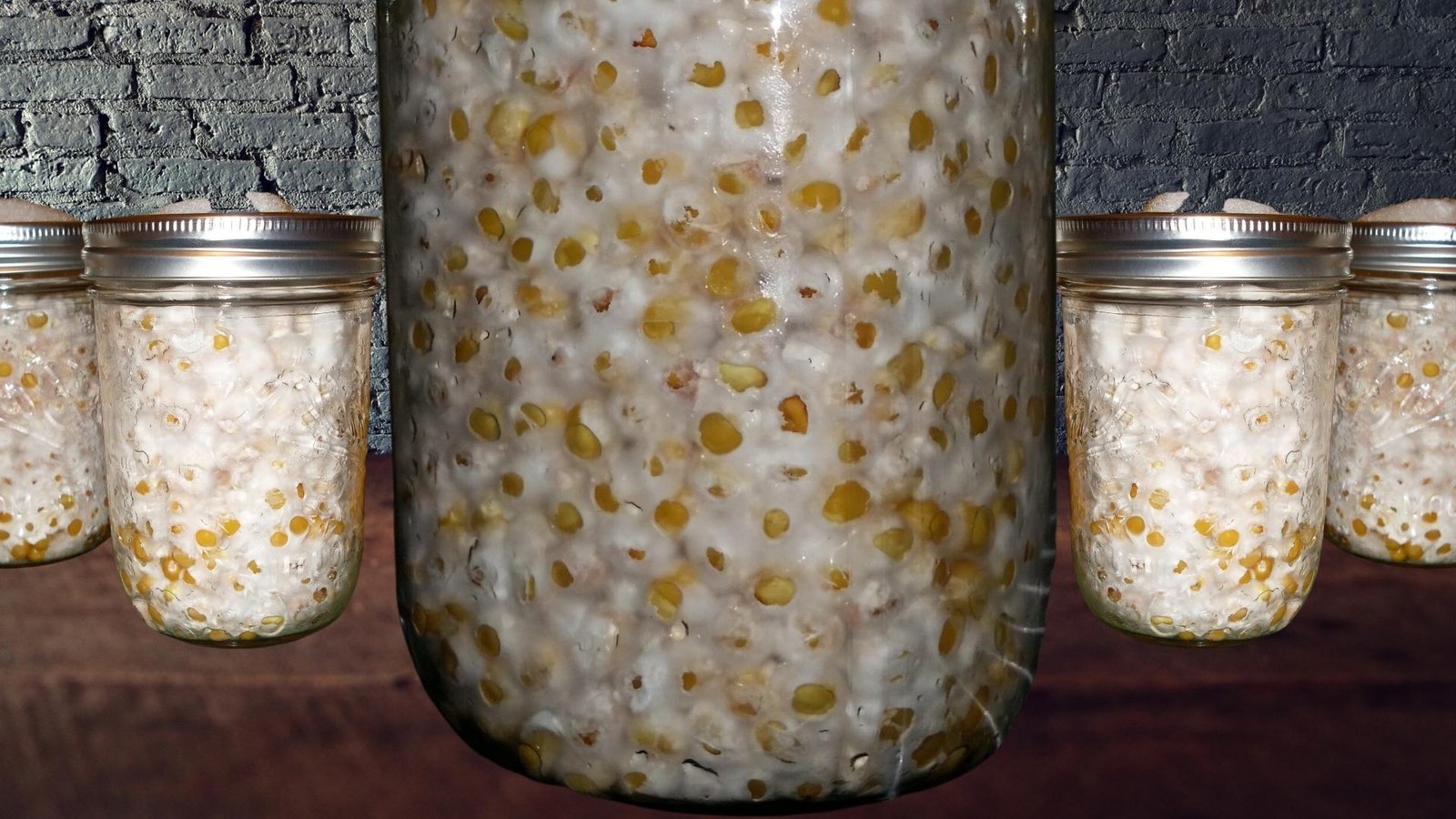
CONCLUSION:
The Popcorn TEK method demystifies the intricate dance of mycology, making it accessible and efficient. Remember, working in a sterilized environment is paramount to achieve desired results. Always adhere to local laws and regulations concerning mycology. This guide is curated for the cultivation of legal and edible fungi only. Happy culturing!
Don’t forget to check out the 🍄 Mushroom Network’s Marketplace to see what’s available. But hurry, our shelves are constantly evolving, and you wouldn’t want to miss out on this wonderful mushroom. Join our growing network of Patrons, Genetics, and Mycologist Vendors only on the 🍄 Mushroom Network!
Recommended Reads:
From Forest to Fork: The Culinary Delight of Chicken of the Woods
The vibrant orange hues of the Chicken of the Woods mushroom aren’t its only allure;...
Read More...Caesar’s Mushroom (Amanita Caesarea)
SCIENTIFIC NAME: (Amanita Caesarea) COMMON NAME(S): Caesar’s Amanita | Royal Amanita | Orange Amanita |...
Read More...Unveiling the Veil: A Patron’s Transcendental Journey through P. Tampanensis
Have you ever experienced a moment, a sliver of time, when the world around you...
Read More...Mushroom for Beginners: Unveiling the Fascinating World of Fungi
Mushroom identification is an art that goes beyond just examining the physical appearance of a...
Read More...Whoa there, Spore Sport! 🍄 Looks like you’re not logged in yet. Don’t you know what you’re missing? MYCO-CREDITS! Imagine all the fungal fun you could have. It’s like finding a Morel in May and not picking it. Tragic, right? Log In or Become a Myco-Patron and start racking up those credits. It’s more rewarding than finding a mushroom in your backyard! 🌟🏡

